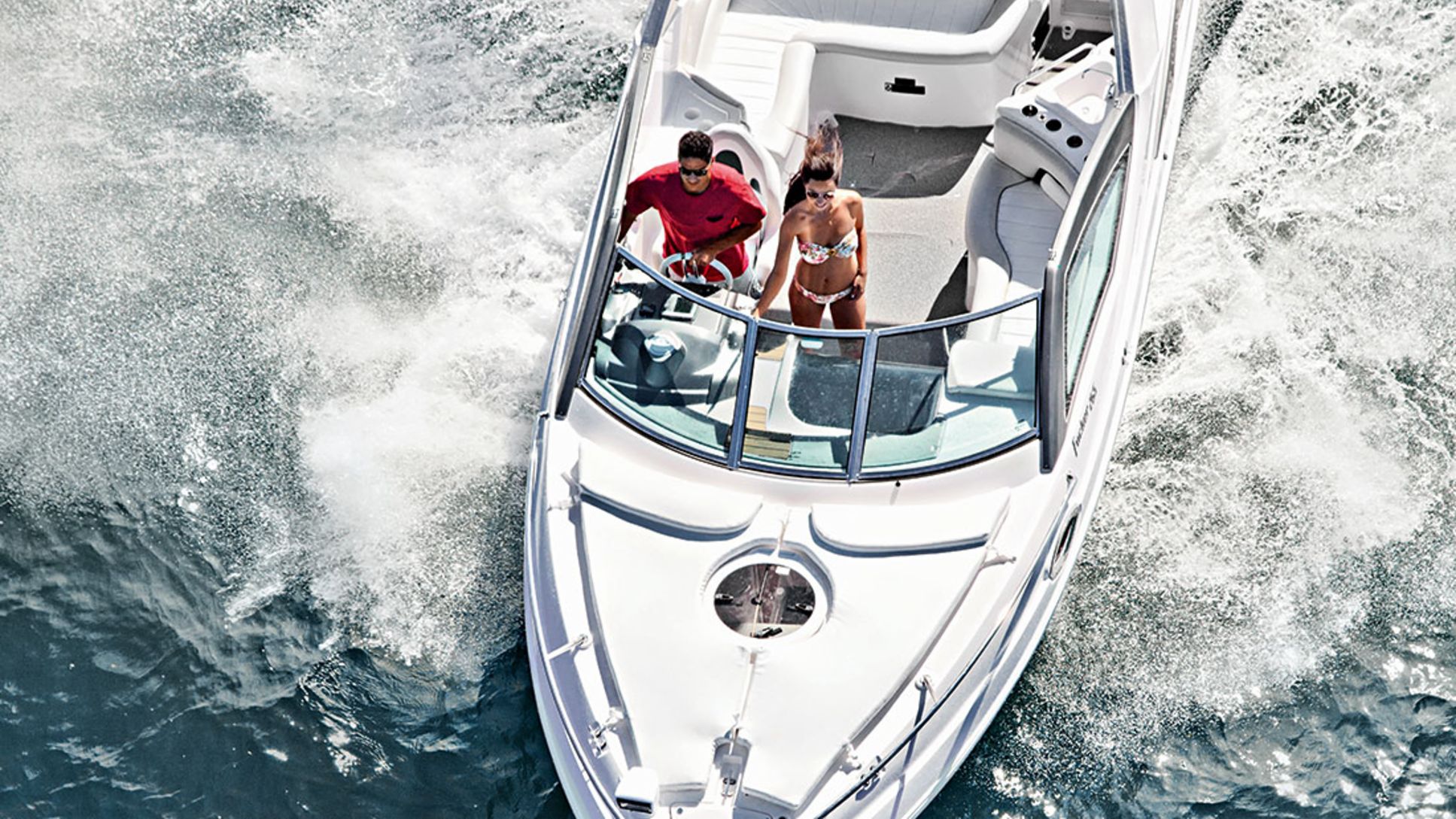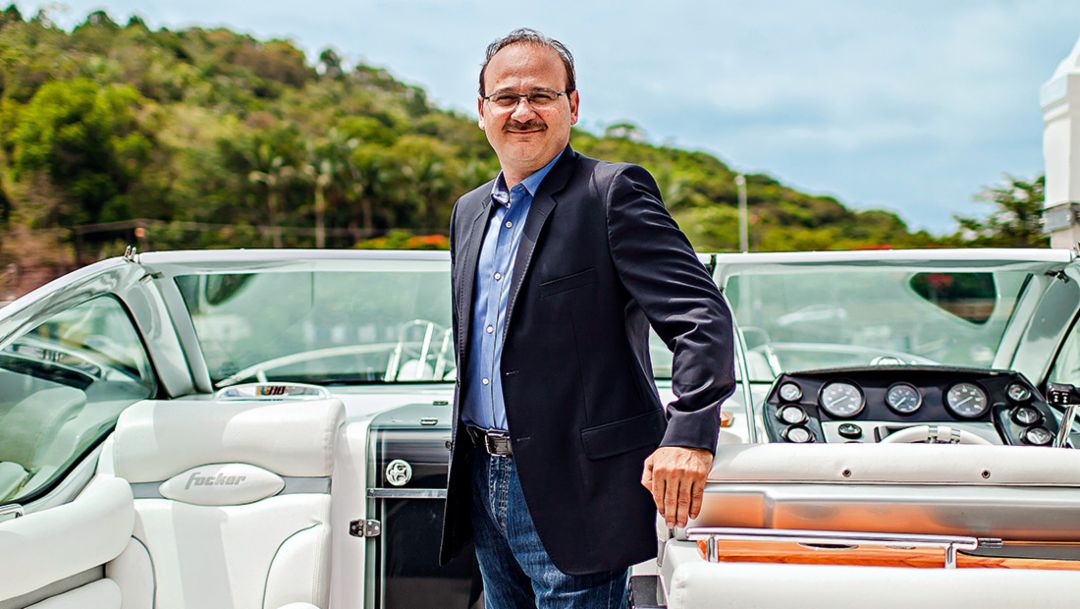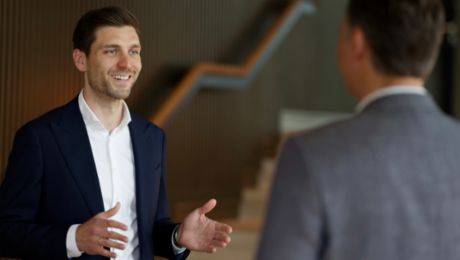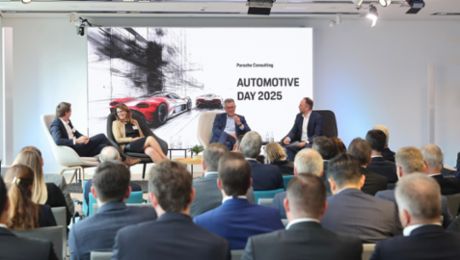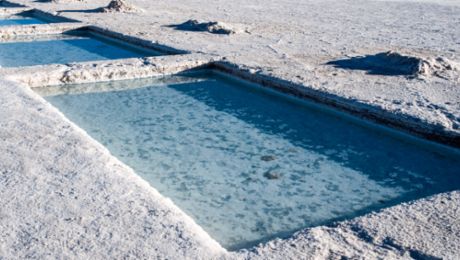The motorboat maker Fibrafort is pursuing a successful course. To remain at the top of the South American market, it is following the example of Porsche. But in order for the company to be completely restructured, a change in culture was required: one that is now starting to bear fruit.
The coastline of the southern state of Santa Catarina is known as the Brazilian Caribbean. It features rainforest interspersed with more than 400 idyllic beaches, in addition to countless small islands. With an average temperature of 20 degrees Celsius, it never really gets cold in this part of the country. And it is a paradise for aquatic sports. More than one in every 300 Brazilians owns a boat, and here that figure is even higher. The area also has one of the highest standards of living in the country. So if you are seeking to be successful in the motorboat sector in South America, this is the place to do it.
“Our boats are like Porsche sports cars for the water.”
And that, in a nutshell, was Márcio Ferreira’s business idea. Ferreira is the CEO of Fibrafort, the most successful maker of motorboats in South America. “Our boats are something like Porsche sports cars for the water,” he says. “We too have established our position primarily on the basis of design, fascination, technology, and the quality of our products.”
Ferreira started the company in 1990 by making fiberglass products for the nautical industry. Three years later he launched the first Fibrafort motorboat, an entry-level model with an outboard motor. Thanks to its well above-average design, quality, and finish, the boat made a splash on the market. As demand grew, the company rapidly expanded its product range and laid the foundation in 1998 for today’s family of models. The boats are sold under the brand name Focker in their home market, and under the name Style on international markets.
Market leader in the Sport Line segment
Fibrafort’s product range currently has twelve models, which are available both at home and abroad. Its main segment is the Sport line with boats of up to eight meters (25 feet) in length, including a relaunch of a model designed specifically for recreational fishing. Fibrafort is the leader in this area, with 40 percent of the market share. Its bestseller is the Focker 190, which enjoys the highest sales of any boat in Brazil.
The company’s Cruiser line consists of four boats that measure up to ten meters (32 feet) in length. Most of the models feature a small cabin, but Fibrafort also has completely open types. “It’s warm throughout the year here,” explains Ferreira, “and whole families use our boats for recreation. That’s why we make our cabins relatively small or dispense with them entirely to provide more space out in the open.”
And it’s a strategy that works: Fibrafort has sent more than 13,200 boats to 42 different countries, including the USA and Australia as well as to customers in Africa and Europe. Several models have received national and international awards, including the “Boat of the Year” in Australia. A market study shows that more than 93 percent of customers are satisfied with their Fibrafort boats, whose bearing structure comes with a ten-year manufacturer’s warranty.
One of the densest networks of motorboat dealerships in Brazil
Customer satisfaction is also based on the company’s outstanding service. Throughout the year, a service vehicle visits all the major sport harbors in Brazil and repairs minor damage to Fibrafort boats free of charge—even without being asked to do so by the owners. “There are some surprised faces when customers return and see that a repair has been done in their absence,” says Ferreira with a smile.
This special degree of attention is one of the few direct lines of contact between the company’s boatyard and its end customers, because Fibrafort sells all of its boats via dealerships. With around 40 such outlets, it has one of the densest networks of motorboat dealerships in Brazil.
However, the motorboat market is constantly subject to seasonal fluctuations and has become increasingly competitive. American makers in particular are doing more and more of their production in Mexico and Brazil to avoid export fees and to increase proximity to the evergrowing Brazilian market.
To maintain his edge, Ferreira decided to guide his company by basing it on industries that are more advanced than the boat-building sector. He came across Porsche Consulting, which had opened its first overseas office in 2010 in the Brazilian city of São Paulo. A Porsche Academy presentation was what prompted the first joint project: optimizing the development processes for the “Focker 265 Open,” an open version of the same model number with a cabin.
This project in 2013 culminated in a new first for Fibrafort: it completed a new model eight days before its premiere at the São Paulo Boat Show—one of the most important events for the South American boat market. “It used to be the case that show boats were finished at the last minute following a lot of overtime,” says Senior Consultant Huber Mastelari at Porsche Consulting in Brazil.
27 million euros of posts sales
This development project then prompted Fibrafort to examine all of its company divisions with the help of Porsche Consulting. Work started at the boatyard in the port city of Itajaí, where around 300 employees build an average of four boats a day, or 900 a year, on premises measuring more than 7,000 square meters. The company posts sales of around 80 million reais a year, or just under 27 million euros. It started its restructuring project in August of 2013 by analyzing the existing situation, and a month later held its first workshops and training sessions.
Building a boat involves a lot of work by hand. The largest components are the hull and the superstructure, which Fibrafort makes out of fiberreinforced plastic. The company used to join the two parts at an early stage and only later start doing most of the work on the interior. “That was very time-consuming and complicated,” says Mastelari. When the production processes were optimized, this “marriage” was shifted to a later point in time to enable as many components as possible to be installed in the open hull beforehand.
At the same time, Fibrafort invested in new production technologies. For example, it no longer made and coated its instrument panels by hand, but instead produced them by means of a resin transfer molding (RTM) process. This not only improves the quality of the surface, but also enables signs of wear to be polished away and eliminates the need for touch-ups. “This also allowed us to lower the material costs,” says Operations Director Danilo Fontana, “because the machine process uses the precise amount of resin required and no more.”
Close cooperation with Porsche Cosulting
In the meantime, the development, logistics, material and cost planning, purchasing, and storage processes were optimized in addition to those for standard production. “Fibrafort is entering a new era with more automated and faster processes while also further enhancing its quality,” says Ferreira, adding that “we are working closely together with Porsche Consulting to do this strategic restructuring.”
The company has lowered the proportion of material costs by ten percent. Production and efficiency were once impeded by the need to order an average of around 1,000 extra parts a day, and as many as 3,000 at peak times. Today this figure has been cut by 90 percent, and no more than 100 extra parts have to be ordered.
In parallel to this, the reject rate has been decreased from an earlier average of 28 items to only 19. Overtime has been reduced by 48 percent and is expected to decrease even further. “We have not only become considerably more productive,” says Ferreira, “but the work is also more pleasant and less stressful for the employees.”
However, in the beginning not everyone on the team was convinced of the benefits of the new way of working. “Introducing operational excellence is not one small step that you can make overnight,” says Rüdiger Leutz, Managing Director of Porsche Consulting in Brazil, “it’s much more like a change in culture.”
“A lean way of thinking is the path to efficiency.”
In Ferreira’s eyes the company still has more to do. “We’re already well set up in terms of operations,” he says. “But operational excellence also means streamlining indirect areas like sales, finances, and administration, and we still have to work on that.” To gain more ways of fueling their switch to operational excellence, Ferreira and Fontana wanted to see for themselves how Porsche lives this approach. After a week in Germany during which they visited the Porsche plants in Zuffenhausen and Leipzig, they are convinced that Fibrafort is on the right track.
Ferreira is impressed, commenting that “we’ve seen that it’s possible for a company and its employees to progress together and to have a shared aim. A lean way of thinking is the path to efficiency and the road to the future.” Their first step on returning to Brazil is to train their leadership personnel in order for them to internalize the principles of lean management and pass them on to their teams.
Fibrafort is also planning additional expansion by entering a new market. In 2015 it expects to launch a new line of yachts measuring up to 13 meters (44 feet) in length. When Cruiser line customers asked about the next largest boat, Fibrafort used to have to pass.
But as Fontana explains, “Over the coming months, we want to put all the conditions in place to make these new boats starting in January 2015. We’re not only building new manufacturing facilities for these products, we’re also initiating all the new employees into the principles of lean production. We will focus consistently on putting everything we’ve learned from Porsche Consulting into practice.”
Info
Text first published in „Porsche Consulting - THE MAGAZINE", Issue 15
Author: Peter Weidenhammer
